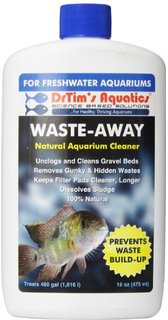Welcome back! In part 1 of this series, we described Cyanobacteria and explained the causes of its outbreaks in an aquarium. In part 2 we will explore a few methods for arresting Cyanobacteria growth and eradicating it from the aquarium.
Natural Methods of curbing Cyanobacteria growth
Do not overfeed – Overfeeding can raise PO4 and NO3 levels which can cause cyanobacteria blooms. Overfeeding can also contribute to nuisance algae outbreaks.
Change T5, VHO & Metal Halide bulbs every 9-12 months – Metal halide and fluorescent lamps will lose strength, dim and change color spectrum over time. The resulting decrease in par will allow an opportunity for Cyanobacteria to grow and cultivate.
On Marine Aquariums maintain Kelvin temp above 10,000K – This measure will not prevent cyanobacteria growth but in can slow it down considerably.
Water Flow & Circulation – Make sure that your pumps are clean, well maintained, and operating at full efficiency. Also make sure that they are placed strategically to allow maximum movement and circulation. Proper water flow & water circulation in the tank will reduce dead spots in the aquarium where detritus can settle and lead to an increase in dissolved organics in the water column.
Aquascaping – Proper aquascaping can limit the amount of dead spots in the aquarium. Allow spacing between rocks. An overabundance of rock or failure to leave open spaces can foil even the best efforts of your flow and wave pumps.
Chemical Control
A typical way to treat cyanobacteria and algae is with antibiotics. Antibiotics will work effectively but they only kill the resulting bacteria….they do not alleviate the conditions which led to your outbreak in the first place. You should be aware that antibiotics can cause collateral damage. Antibiotics will kill cyanobacteria but they will also kill the beneficial nitrifying bacteria and symbiotic coral bacteria. After the antibiotic has killed the cyanobacteria, the resultant decaying process produces more organics and nutrients which, in turn, will feed more algae and cyanobacteria. This can be somewhat ameliorated with a water change after the cyanobacteria die. We only recommend using antibiotics as a last resort on a fish-only system.
Other Methods of Killing off Cyanobacteria
Here are a few products which directly and indirectly target cyanobacteria growth. AquaNerd doesn’t endorse any one product over the other. If you have had success with one of these products or one which is not mentioned here, then we would like to hear your thoughts in the comment section.
Dr Tim’s Aquatics Waste-Away – is a special blend of bacteria isolated from their own freshwater and saltwater aquaria and ponds. These bacteria attack dissolved and particulate organics in the aquarium while also consuming phosphates and nitrates. Since nitrate and phosphate contribute to the growth of algae, slime and cyanobacteria; the use of antibiotics/algaecides only provides a temporary fix. Online feedback from customers that have used Dr. Tim’s Waste-Away are mostly positive.
Korallen-Zucht CyanoClean – is described as a special bacterial strain that outcompetes Cyanobacteria. Customer feedback on Cyanoclean is mostly positive and the manufacturer recommends to use Korallen-Zucht Coral Snow if the outbreak is severe. Zeovit products are manufactured in Germany and distributed in the US and Canada through Proline Aquatics.
Poly Bio Marine Filter Pads – Thes chemical filter sponges remove water impurities such as nitrates, phosphates, silicates, ammonia, copper, and chlorine and parasitic medications after treatment. Manufactured in the US and available at many stores and online shops. A favorite among aquarium maintenance companies. Visit the Poly-Bio-Marine website for more information.
Reef Interests All-In-One Biopellets – This product has been shown to remove as much as 5 times more nitrate and 10-20 times more phosphate than other biopellet media. The patented material colonizes probiotic (beneficial) bacteria which compete for the same food sources as cyanobacteria. These biopellets must be fluidized in a biopellet reactor. Manufactured in the Netherlands and distributed in the USA through Aqua Specialty.
Cyanobacteria can be a major nuisance and distraction in your aquarium. We hope that the tips and suggestions provided herein will reduce your stress and help to provide many hours of happy reefing.










